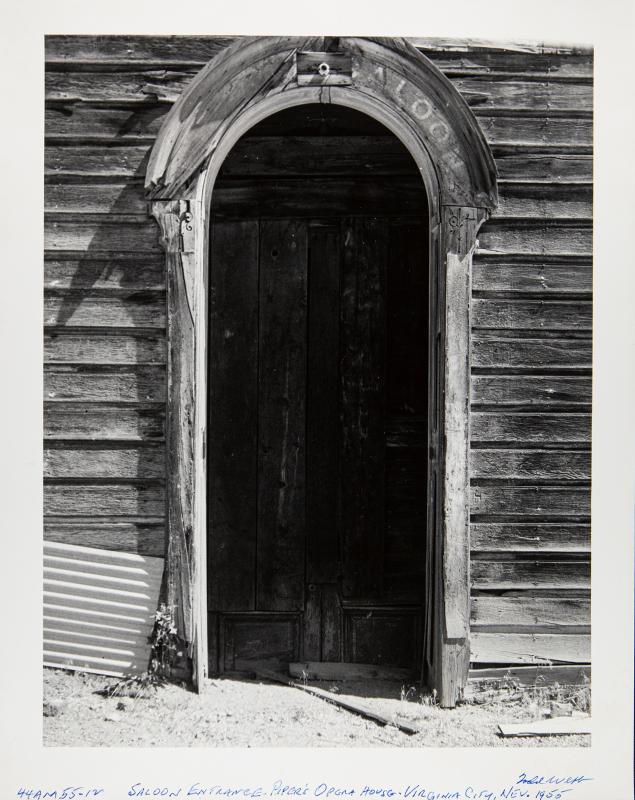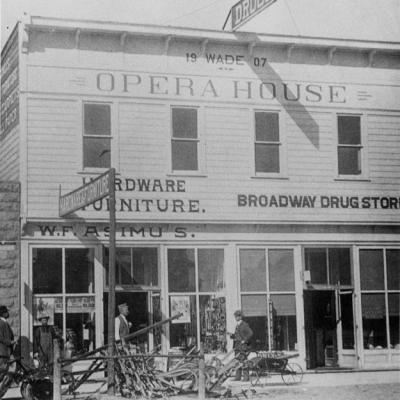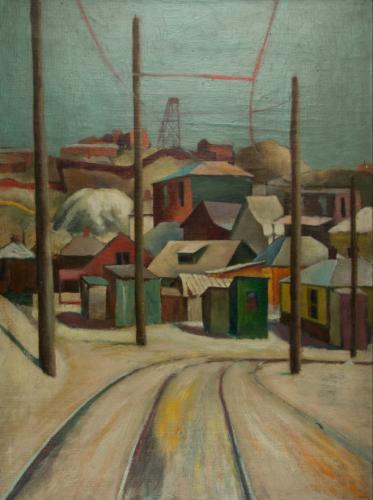Industry Economic Human Landscape
Life Outside the Mines
In Special Collections
At the Utah Museum of Fine Arts
Related Resources
In Special Collections
Mining relied on an extensive labor force. Opportunities for wealth trumpeted by industry attracted immigrants, workers of color, and white laborers, working and living together in close quarters. Relationships between these groups were not always easy. Immigrants and workers of color were frequently housed in segregated areas, marked for the more dangerous jobs, and targets of racism and violence by white miners. Note that at this time, the vast majority of immigrants were discriminated against regardless of their country of origin.
Many immigrant miners joined the 1922 nationwide coal mining strike that resulted in violent clashes and the death of a Standardville sheriff. On June 14, 1922, in the hours following the death of the sheriff, a bakery and pool hall owned by Greek immigrants was raided by a crowd of 40 or 50 men with rifles. Despite the fact that many of these Greek immigrants were not miners, they were targeted for the earlier death of the Standardville sheriff. The men were herded out of the bakery and pool hall, held hostage, and driven out of town. The statement of George Nikakis (himself disabled and unable to work in the mines) about the raid was collected by attorney Samuel King - the story of the raid was not reported in local newspapers.
"From there by the same way drove us about 900 feet and stop again out side (sic) of the garage, then told us to face the wall, at that time every one of these men he was doing at his plaesure (sic) kick, poke, strike, insult, and abuse us; there they start to argue about the way to ger (sic - possibly get?) through with us, few they liked to shoot us, few to hang and few to kick the life out of us, they did not reached (sic) to any conclusion...But at that time a young man from Price, Utah took our side and he opened argument with the other that they went to (sic) far with us, he told them it is shame the way they acting. This man saved our lifes (sic)."
Relationships between immigrant miners, American-born miners, and miners of color were, in some areas, friendly, (with several notable exceptions, such as the towns of Bingham and Copperfield, Utah), or at least united in labor strikes . Howard Browne, a Black miner in Carbon County interviewed in 1983, described having Polish, Austrian, and Italian friends although interracial marriage was prohibited. Browne also described Price as being "off limits" to Blacks, but closer to the heart of the mining industry, and immigrant communities, in Helper, Black people could go to restaurants, hotels, and move about in the community freely, including social events.
Social events for miners and their families included picnics, shows, and dances, and most were funded by "welfare dollars" taken out of miners’ wages. In the summer, these activities even included a baseball league. Joe Myers described the leagues in a 1982 oral history:
"In 1920 is when they started importing ball players here, and on all these camps around here. They gave them jobs. What they'd do, they'd send one of the officials of the company down to the coast, either to Vernin(?) [likely Vernon, California, just outside of Los Angeles]--Vernin had a team in the Coast League--Los Angeles, San Francisco, and they'd go down and pick up these rookies that couldn't cut it. "
Residents went from camp to camp on passenger trains, traveling to each Sunday baseball game. The touring teams that stopped through (including the Tokyo Giants, Jefferson's Giants, and the Negro Leagues’ Kansas City Monarchs) enlivened camp life in the 1920s and 1930s.
At the Utah Museum of Fine Arts
Todd Webb, Saloon Entrance, Piper’s Opera House, Virginia City, Nevada, 1955. UMFA2018.15.1
When photographer Todd Webb (1905-2000) was nearing the age of 50, he decided to embark on a photography project that would take him across the United States, following old pioneer trails from east to west – on foot. Sponsored by a Guggenheim Fellowship, Webb’s six-month journey took him to towns throughout the West, including Virginia City, Nevada.
Profile of Bingham Canyon Miners analyzes different immigrant communities working in the Utah Copper Company mines. (Rajive Ganguli, PhD, PE; Rambabu Pothina, PhD; Michael Nelson, PhD)
The End of the City of Bingham Canyon (demolished in the 1970s to make way for expanding mine operations) reveals more about community life in the town of Bingham. (Brian Leech, PhD)
Creating Graphic Histories
Lesson Plan, 7th Grade
Reilly Jensen
Students will compare and contrast primary references (in support of UT Standard 2.2 and 2.3; U.S. 1 Strand 6.2; 6.3--such as personal journal accounts of Immigrants and Settlers in Utah Territory; popular songs about their journeys; historic and contemporary photo records, etc.) to assemble a narrative from a chosen perspective (i.e. from the perspective of an individual). After studying examples of comics that relate historical events (such as the Buffalo Soldiers Comic from Sema Hadithi), and studying visual narrative and comic-book fundamentals, students will create an original narrative (using historic resources to inform the narrative) and draw their own comics that relay the perspective and story of a person or a group of people in history (UT CREATE Standard 7-8.E.CR.2; 3; 4; 5; 6).











